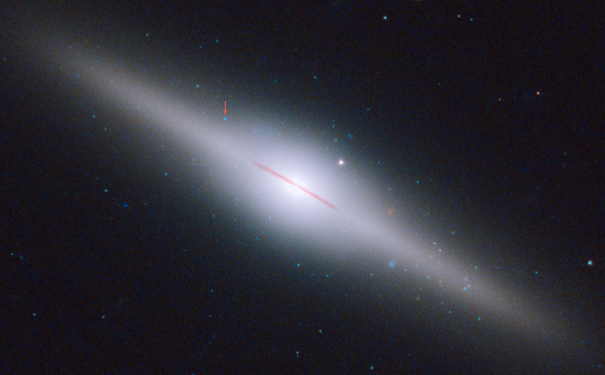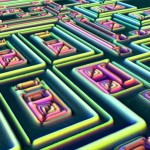
HLX-1, located in the galaxy ESO 243-49. Image: NASA, ESA, and S. Farrell (Sydney Institute for Astronomy, University of Sydney).
A new class of black hole could be the key to the formation of supermassive black holes.
A massive cluster of young stars has been discovered around the only known Intermediate Mass Black Hole, HLX-1. This discovery could bring scientists closer to supermassive black holes, located at the centre of galaxies, and the galaxies themselves form and interact.
Stellar mass black holes form through the collapse of a massive star, but it isn’t currently clear how supermassive black holes form. One theory suggests that they could form when stellar mass black holes combine in a dense environment.
If this theory is correct, then Intermediate Mass Black Holes could be the middle stage of this process. “Intermediate black holes are a crucial missing link between stellar mass and supermassive black holes, and may turn out to be the building blocks of the supermassive black holes found in the centre of galaxies,” said University of Sydney researcher Dr Sean Farrell, author of the study published in the Astrophysical Journal today.
“Our own Milky Way may be filled with them.”
This process would take place in a dense environment, such as a low mass dwarf galaxy. The presence of the young star cluster, observed using NASA’s Hubble and Swift Telescopes, may substantiate this theory.
“The fact that it’s a very young cluster of stars indicates that our intermediate Mass Black Hole may have originated as the central black hole in a very low mass dwarf galaxy, that has been swallowed by the massive galaxy that it now resides in,” Farrell said.
The discovery of HLX-1 in 2009, by a research team led by Farrell, settled the debate over the existence of an intermediate class of black holes. Observations revealed its mass to be approximately 20,000 times that of our Sun.
Black holes are classified as stellar mass black holes, which have a mass up to ten times that of our Sun, and supermassive black holes, whose mass is millions to billions of times greater than our Sun. This mass gap between them led scientists to suspect that there could be a previously undetected intermediate class of black hole.
“The link in between is something we’ve been looking for for a very long time,” Farrell.
The researchers will continue to search for more Intermediate Black Holes, as their numbers could reveal their age.






